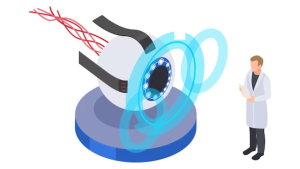Retinal Detachment – Ahalia Foundation Eye Hospital
The eye is a fascinating and fragile organ, and it requires specialised care to ensure the wellbeing of all of its numerous parts. Retinal detachment is one such condition that demands prompt care. The Ahalia Eye Foundation and Hospital in Palakkad serves as a ray of hope for people in need of outstanding vitreoretinal care with its 24-hour Retina Clinic. In this blog article, we’ll explore the Retina Clinic’s outstanding services and showcase the qualifications of the vitreoretinal experts at Ahalia Eye Foundation.

Retinal detachment describes an emergency situation in which a thin layer of tissue (the retina) at the back of the eye pulls away from its normal position. The retinal cells are separated from the layer of blood vessels that feeds and oxygenates the eye via retinal detachment. You run a higher risk of losing vision in the affected eye permanently the longer retinal detachment is left untreated.
Know your symptoms
The actual retinal detachment causes no pain. But before it happens or has progressed, there are virtually always warning indicators, such as:
1. Unexpected emergence of numerous floaters, which are little specks that seem to be moving through your field of vision
2. Flashes of light (photopsia) in one or both eyes
3. Distorted vision
4. Gradually deteriorating peripheral (side) vision
5. A thin, opaque shadow covering your area of focus
Reduced vision, the abrupt emergence of floaters, and flashes of light are all potential warning symptoms of retinal detachment. Your vision may be saved if you immediately contact an ophthalmologist.
The following factors increase your risk of retinal detachment :
1. Aging — retinal detachment is more common in elderly
2. Previous retinal detachment in one eye
3. Family history of retinal detachment
4. Extreme near-sightedness (myopia)
5. Cataract removal
6. Eye injury
7. Previous other eye disease or disorder, including retinoschisis, uveitis or thinning of the peripheral retina (lattice degeneration)
The Retina Clinic at Ahalia Eye Foundation is committed to the diagnosis, therapy, and management of a variety of eye disorders involving the retina and vitreous body. The clinic provides comprehensive care to patients of all ages and is staffed by highly qualified vitreoretinal experts. It is outfitted with cutting-edge equipment.
The vitreoretinal experts at Ahalia Eye Foundation have extensive training in the diagnosis and management of a variety of eye diseases. These consist o:
Age-related macular degeneration (AMD: is the main reason why older people lose their vision. The experts at Ahalia Eye Foundation are skilled at creating individualized treatment regimens to properly manage this illness.
Flashes and floaters : These signs could point to a retinal tear or a posterior vitreous separation. The Ahalia Eye Foundation’s Retina Clinic can quickly identify the underlying problem and suggest suitable treatment choices.
Diabetes Retinopathy : Diabetes can harm the retina, which can impair eyesight. This condition is known as diabetic retinopathy. The specialists at Ahalia Eye Foundation are professionals in treating diabetic retinopathy with lasers, injections, and other cutting-edge methods.
Retinal Tears and Detachment: Patients with retinal tears and detachment need to see a doctor right away. The Ahalia Eye Foundation’s Retina Clinic offers quick diagnostic and surgical treatment to reattach the retina and restore eyesight.
Hereditary retinal illnesses, such as retinal pigmentosa and other genetic abnormalities, are well-managed by the professionals at the Ahalia Eye Foundation. They provide thorough management techniques to lessen eyesight loss and enhance patients’ quality of life.
When it comes to the health of your eyes, seeking the expertise of dedicated specialists is of utmost importance. For outstanding vitreoretinal care, the Ahalia Eye Foundation and Hospital’s Retina Clinic in Palakkad is known. For patients struggling with a variety of eye diseases, including retinal detachment, they offer a beacon of hope because to their extensive services, cutting-edge technology, and round-the-clock availability. Ahalia Eye Foundation is clearly the best location to go for vitreoretinal care if you or a loved one require it.
